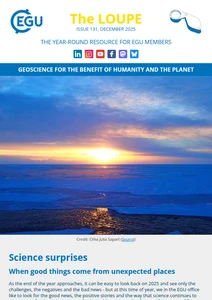President: João C. Duarte
(Emailts@egu.eu)
Deputy President: Paola Vannucchi
(Email)
ECS Representative: Riccardo Lanari
(Emailecs-ts@egu.eu)
The Division on Tectonics and Structural Geology (TS) investigates rock deformation at all scales with the aim to decipher its complex relationships with Earth dynamics. We use natural observations, including mapping, remote sensing and seismics, and experimental methods. The division is highly interdisciplinary, with strong ties with other EGU divisions including GD, EMRP, SM, SSP, GM, G, and GMPV.
Latest posts from the TS blog
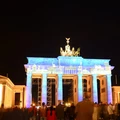
Berlin – the city of unusual geology
“There is no geology here – just dirt!” or “It’s only a large sandbox.” are two common narratives told about the geology of the Berlin region. But is that true? Is there really nothing interesting to find and see for a geologist in the German capital? Let’s start digging! The hard rock One narrative is definitely true, Brandenburg, the state surrounding Berlin, like entire northern Germany, is a large sandbox. So if you are looking for structural exciting, hard rock …
Read more
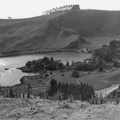
Geomythology. Craitbul journey through the Newer Volcanics in SE Australia
The Aboriginals Australians had and hopefully will continue to have an important oral tradition, especially related to impacts, tsunamis, earthquakes and volcanoes. This time, I would like to set our new narrative in southeast Australia, where the Booandik people tell a story suggesting how their ancestors witnessed and interpreted volcanic activity in the Mount Gambier area. The story, reported by the Scottish missionary Mrs. James Smith (Fig. 1) in her book The Booandik Tribe of South Australian Aborigines: a sketch …
Read more

Gifting geologist made easy – a guide to spoil your favorite persons
The end of the year is around the corner. For many of us, it will be a time of celebration, gathering, party, and GIFTS! And if you think spoiling a geologist is hard, then I’ve got your back. In this post I gather diverse gift ideas, the classics of course and some really unique treasures to get to your favorite geologist (who can be yourself of course). You’ll find ideas whatever your budget is, even free gifts. Let’s get started, …
Read more
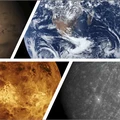
Beyond Tectonics (and Beyond Earth): On the geological timescales of other rocky bodies in our solar system
Geological timescales Unless you regularly work in “deep” time or are very interested in Earth’s very ancient history you might not be too familiar with Earth’s geological timescale. What I am referring to is this: From the very beginning of Earth’s formation ~4.5 billion years ago to today each period is defined and catalogued by events that occurred within them. Many of the periods are named around the place and culture where they were discovered, e.g., the Silurian and Cambrian …
Read more
Recent awardees
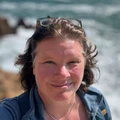
- 2025
- Stephan Mueller Medal
The 2025 Stephan Mueller Medal is awarded to
Heidrun Kopp for innovative research and groundbreaking discoveries in convergent margin systems, large earthquake processes, active fault slip, magmatic arc systems and geohazards.
Read more

- 2025
- Outstanding Student and PhD candidate Presentation (OSPP) Award
The 2025 Outstanding Student and PhD candidate Presentation (OSPP) Award is awarded to
Isabel Wapenhans Can Low-Temperature Thermochronology Constrain Quaternary Glacial Erosion? A Case Study from the Tauern Window, Eastern European Alps
Read more
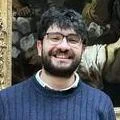
- 2025
- Outstanding Student and PhD candidate Presentation (OSPP) Award
The 2025 Outstanding Student and PhD candidate Presentation (OSPP) Award is awarded to
Iván Navarrete Inter-event strain localization modulated by background stresses across the Natron Basin, East African Rift
Read more
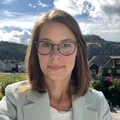
- 2025
- Arne Richter Award for Outstanding Early Career Scientists
The 2025 Arne Richter Award for Outstanding Early Career Scientists is awarded to
Renelle Dubosq for pioneering nanogeology research, advancing our understanding of plastic deformation in minerals, using innovative 2D and 3D analytical techniques in tectonics and structural geology.
Read more
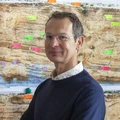
- 2024
- Stephan Mueller Medal
The 2024 Stephan Mueller Medal is awarded to
Yann Klinger for his exceptional interdisciplinary contribution to the fields of seismology and palaeo-seismology, in particular, for his groundbreaking development of space seismology.
Read more

- 2024
- Outstanding Student and PhD candidate Presentation (OSPP) Award
The 2024 Outstanding Student and PhD candidate Presentation (OSPP) Award is awarded to
Julia Schmitz Fabric analyses of fine-grained glacier salt (Kuh-e-Namak, Dashti, southern Iran)
Read more

- 2024
- Outstanding Student and PhD candidate Presentation (OSPP) Award
The 2024 Outstanding Student and PhD candidate Presentation (OSPP) Award is awarded to
Patrick Bianchi Exploring fault preparation and earthquake nucleation from the laboratory
Read more
Current issue of the EGU newsletter
In our December Issue we we are focusing on positive stories of surprises in science. Asmae Ourkiya shared how a prize established in 1900 to reward anyone making contact with alien life (expect Martians) ended up funding more than a century of astronomy research and innovation. Guest blogger Fernanda Matos described the discovery her autism had been driving her interest in Oceanography for years, in her blog on how we can better support people with disability in geoscience. And we highlight some surprises to avoid in our blog on the Austrian visa and Schengen system ahead of EGU26. Also catch up on all the upcoming dates for webinars and funding, including €10,000 to host a Geoscience Day event in your European country, and share your opinions on where EGU should be focusing strategically in the next 5 years in the EGU Members' Survey.
All this and much more, in this month's Loupe!
Read more












